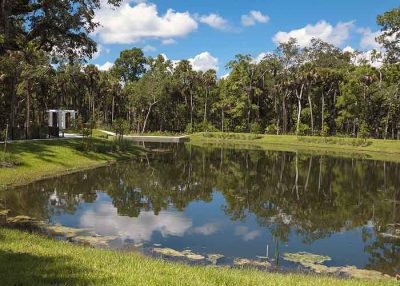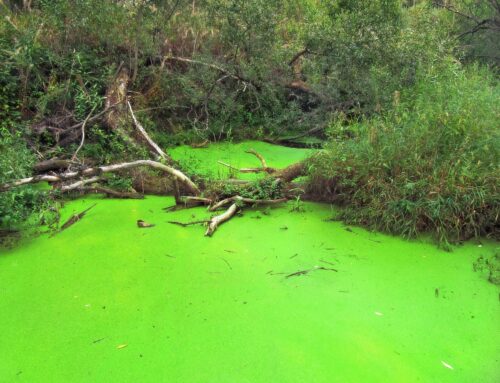Proper testing can offer you the vital information you need to keep your pond healthy. Testing is an accurate way to see if your pond has the oxygen levels it needs. Through testing is where you may find the exact status of your pond’s water condition. Paying close attention to any early detection and make timely corrections so you can prevent developing large issues down the road. Hence why water testing is an important step in pond maintenance.
Oxygen Particles
Oxygen particles dissolve into the water simply by coming into contact with it. Therefore, to introduce more oxygen into a pond, there needs to be more water coming into contact with the oxygen in the atmosphere.
The oxygen content should be monitored especially during high outside temperatures. Should there be problems with the water quality of the pond here are some things to look for.
 Gasping Fish at the Surface: If you see fish such as goldfish or Koi which thrive in oxygen-rich waters gulping near the surface, at the entry of a water stream, or near other features this is a sign of oxygen starvation. Low oxygen levels to fish that thrive with oxygen-rich waters don’t do well if your pond oxygen begins to fall.
Gasping Fish at the Surface: If you see fish such as goldfish or Koi which thrive in oxygen-rich waters gulping near the surface, at the entry of a water stream, or near other features this is a sign of oxygen starvation. Low oxygen levels to fish that thrive with oxygen-rich waters don’t do well if your pond oxygen begins to fall.- Foul Odors: In poorly oxygenated ponds you will find decaying vegetation, excess fish waste, and other organic matter. You will find they emit very distinct smells. If your pond develops a strong “lake” smell, that could be an indication that your water circulation filtration or aeration are not performing well.
- Aggressive Algae Growth: If you notice a thick layer of filamentous or string algae this could suggest an abundance of algal nutrients, that could include carbon dioxide in the water. A pond that doesn’t have aeration or gas exchange is in danger of this growing condition for algae.
Regular Tests
If you want a pond that looks good and doesn’t cause undue stress on your fish, then you need to perform oxygen tests as a regular pond maintenance routine. Pond water parameters like pH are often affected by the oxygen levels in your pond. Routine testing will provide a comprehensive view of your pond’s health.
Aerate to Optimize Oxygen Levels in your Pond.
The best way to improve the oxygen levels of your pond is to increase the water movement or by adding a pond aeration device. As water tumbles over rocky streams or waterfalls, more water comes into contact with the air. This allows harmful gasses to be released from the water as oxygen is mixed in. Pond aeration devices help to do the same thing artificially. You can help mix oxygen into the water with fountains, bubblers, and spitters. They can be used to break the surface of the water which helps the harmful gasses to be released. Air pumps can inject air directly into the water to help raise and maintain safe oxygen levels.





